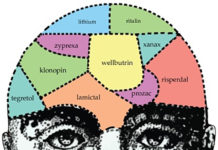Mad in America: 2018 by the Numbers
As 2019 begins, we at Mad in America are looking forward to continuing to broaden our efforts to provide informational and educational resources that will help our society "rethink psychiatry." The start of the New Year also provides us with an opportunity to look back and tally up our efforts in 2018.
MIA Update: Our Parent Resources Initiative and More
Regular MIA readers may have noticed that we recently added a content box on the front page titled “Parent Resources.” This initiative has been a long time coming, and it is one that we hope will help us reach—and serve—a new group of readers. Many parents writing to us are desperately looking for a way out of the conventional system.
Psychologist Rethinks Psychotropic Medications, Calls for Renewed Dialogue
Psychologist and Professor Amber Gum has published the story of her personal journey of rethinking psychotropic medication in a special issue on "The Politics of Mental Health" in The Journal of Medicine and the Person. Influenced by Mad in America and the work of Robert Whitaker, Gum became aware of evidence that “suggests that psychotropic medications are less effective and more harmful than most believe” and now hopes to encourage other mental health professionals and researchers to engage in open-minded, critical self-assessment of standard practices.
Timberrr! Psychiatry’s Evidence Base For Antipsychotics Comes Crashing to the Ground
When I wrote Anatomy of an Epidemic, one of my foremost hopes was that it would prompt mainstream researchers to revisit the scientific literature. Was there evidence that any class of psychiatric medications—antipsychotics, antidepressants, stimulants, benzodiazepines, and so forth—provided a long-term benefit? Now epidemiologists at Columbia University and City College of New York have reported that they have done such an investigation about antipsychotics, and their bottom-line finding can be summed up in this way: Psychiatry’s “evidence base” for long-term use of these drugs does not exist.
Bipolar? When Quitting is the Answer
Whether it’s the Nurtured Heart Approach, or any other method that’s truly up to the task, we need these effective strategies and ways of thinking to be more widespread so we can lessen the pitfalls of the medical model’s limited prospective which has no idea of how to turn intense into immensely great.
On Creative Maladjustment and Rethinking Psychiatry
On this day January 16 2012, we commemorate the life and work of Dr. Martin Luther King, Jr. and as such, many thoughts are...
Antidepressants/Depression
A. The Natural Course of Depression
Prior to the widespread use of antidepressants, the National Institute of Mental Health told the public that people regularly...
Mad In America’s Chapters
Preface
The World Health Organization has repeatedly found that people diagnosed with schizophrenia in the U.S. and other developed countries fare much worse than schizophrenia...
Polypharmacy/Bipolar illness
A. Bipolar Illness Before the Psychopharmacology Era
Prior to 1955, bipolar illness was a rare disorder. There were only 12,750 people hospitalized with that disorder...
Early Death Associated With Antipsychotics
There are a vast number of studies that document the diverse range of side effects caused by antipsychotic drugs. These adverse effects include brain...
Outcomes in the Era of Atypical Antipsychotics
Once second-generation antipsychotic drugs came on the market (which are known as “atypicals”), there were claims by psychiatric researchers that they would lead to...
A Research Timeline for Antipsychotic Drugs
1883 Phenothiazines developed as synthetic dyes
1934 USDA develops phenothiazines as insecticides
1938 Phenothiazines used to kill swine parasites
1949 ...











